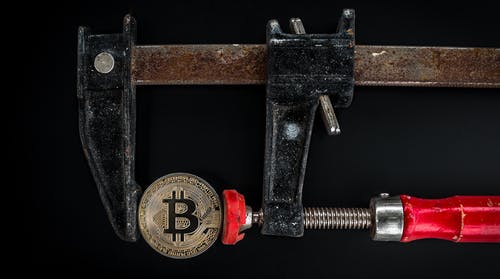ALL YOU NEED TO KNOW ABOUT BITCOIN HALVING:
Bitcoin’s latest halving happened on May 11, 2020. To illustrate what Bitcoin Halving is, we should first demonstrate a little on how the Bitcoin network functions.
Bitcoin and its blockchain are essentially a set of machines or nodes around the planet that all have Bitcoin technology downloaded to them. All of these machines have all of the bitcoin blockchain placed on them. This assumes that every machine has a history of bitcoin payments that guarantee that no one will trick the process as every device can reject the payment. Bitcoin is completely transparent in this sense because no one can make a trade without someone watching it happen.
More devices or nodes connected to the blockchain would improve its reliability and protection. There are presently over 10,000 nodes expected to operate Bitcoin’s code. While anybody can engage in Bitcoin’s network as a server, as far as they have sufficient bandwidth to access the whole blockchain and its record of payments, not all of them seem to be miners.
BITCOIN MINING:
Bitcoin mining is a method in which people use their machines to engage in Bitcoin’s blockchain network as a payment node. Bitcoin uses the Proof of Work method. This implies that the miners must show that they have made attempts to make payments to be awarded. This initiative requires the time and resources required to run your machine hardware and solve complicated equations. Faster machines with some pieces of hardware deliver higher incentives, and some firms have developed computer chips exclusively formulated for mining. These machines are charged with handling bitcoin transfers and are praised for doing so.
The word mining is not used literally but is being used as a relation to how precious metals are extracted. Bitcoin miners can solve mathematical concepts and validate the authenticity of the payment. Then they connect these payments to a block and build chains of these blocks of payments creating a blockchain. When a node is loaded with transfers, the miners who have handled and validated the transactions inside the block are compensated. More financial cost payments need more verification to guarantee protection This method is called mining since the jobs finished to get a new bitcoin out of the software is a technical counterpart of the actual work done to get gold out of the planet.
BITCOIN HALVING:
Every 210,000 blocks mined, or almost every four years, the compensation granted to Bitcoin miners for transferring money is cut by half. This decreases by half the level at which the latest Bitcoin is introduced into distribution. This is Bitcoin’s method of using a technological method of inflation that is half every four years before all of Bitcoin is launched and in distribution.
This system will run until 2140. At that stage, miners will be credited with payments for the handling of payments that will be charged by network users. These payments imply that the miners also have a chance to mine and ensure that the network is running. The theory is that demand for these payments would allow them to stay low after halving has been achieved. In 2009, the payout for each block of the mining network was 50 Bitcoins. After the very first halving it was 25, then 12.5, and on May 11, 2020, it went to 6.25 bitcoins a block. To explain this in another way, consider that the amount of gold produced from the planet was reduced by half every four years. If the worth of gold is dependent on its scarcity, so the “half” of gold production every four years will potentially increase its price.
These halves decrease the pace at which new coins are produced and thereby decrease the supply available. This will have certain consequences for consumers, as other low-supply commodities, such as gold, can have strong demand and drive prices upward.
In the old days, these bitcoin halves were associated with large price spikes in bitcoin. The first half, which happened in November 2012, saw a rise from around $12 to almost $1,150 in a year. The second half in Bitcoin happened in July 2016. The price of the halving was around $650, and by December 17, 2017, the price of Bitcoin had risen to approximately $20,000. The stock then plummeted over the span of a year from this level to about $3,200, a price almost 400 percent higher than its pre-half price.
CONCLUSION:
It is very easy to start trading bitcoins and cryptocurrencies nowadays. You just have to choose a trading platform, open an account there and start trading but what challenging is to learn the different techniques and methodologies like halving and mining which are fundamental parts of bitcoins. One should properly gain knowledge about these underlying terminologies and then start their trading journey.
